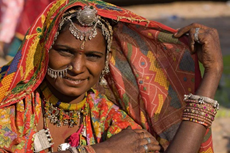

2nd November 2022 (6 Topics)
Context
The PM has said that the Mangarg massacre of tribals to crush the Mangarh uprising was not given its due place, but now is the time.
Key points highlighted by PM
- PM has ensured the Bhil Tribal of Mangarh on Gujrat-Rajasthan Border that the sacrifices of tribals during the freedom struggle will get due importance.
- PM hailed the role of Govind Guru in the movement launched in the Banswara region by tribals in 1913 against colonial rule.
About Govind Guru:
|
About
About Mangarh massacre
- The Mangarh massacre (17 November 1913) took place six years before the infamous Jallianwala Bagh massacre in 1919.
- Also known as Adivasi Jallianwala
- The soldiers of the British Indian Army fired indiscriminately on Bhil protesters who were demanding the abolition of bonded labor.
- The Bhil tribe’s movement was challenging the colonial government as well as the wrongs of the princely states in which they were residing.
- Approximately 1,500 Bhil tribals and forest dwellers died in the incident which came to be known as the Mangarh massacre.
- The movement was initiated by Guru Govindgiri who raised a front against local rulers forcing the Bhils into unpaid labor, labor heavy taxes, and high land revenue rates.
Events at Mangarh massacre:

- Govindgiri’s representatives submitted a list of grievances and demands against the Rajput States after which the British called upon the Bhils to leave Mangarh Hill before November 15, 1913.
- The princely kingdoms of nearby Dungarpur, Banswara, and Synth pressured the colonial government who then sent in the Mewar Bhil Corps to attack the Mangarh Hill.
- According to Bhil's oral accounts and later records, more than 1,500 men, women, and children were killed and many were wounded in the indiscriminate firing.
- In 1952, an annual fair was instituted in Mangarh in memory of Guru Govindgiri and his disciples.
|
Bhil tribe
|
Significance:
- The demand for national monument status for Rajasthan’s Mangarh Dham is “long-due”.
- The initiative will bring the forgotten sacrifice of the Bhil tribe in one of the most sordid chapters of Indian history into the spotlight.
More Articles


